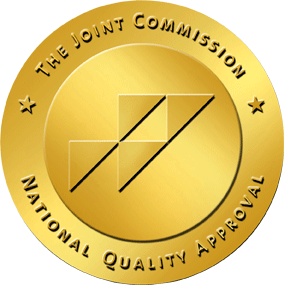All substance abuse rehabilitation programs begin with detoxification. This is a critical process in which the patient’s body removes any drugs or alcohol in their system.
Detoxification is not an easy process for most people. The process can take anywhere from a few days to a few weeks for a person to fully detox. This time depends on their history of drug and alcohol use.
That’s why it’s essential to undergo detoxification under the guidance of a trusted medical advisor. Patients will inevitably experience withdrawal symptoms, which can be physically painful and emotionally exhausting.
Some withdrawal symptoms include:
- Anxiety
- Nausea
- Insomnia
- Mood swings
- General body discomfort
- Inability to concentrate or sleep
Unfortunately, there is no way to know which symptoms a patient will experience. However, there are options for getting through the detox process.
The two most prominent detoxification methods are Social Detox and Clinically-Supervised Detox.
What is Clinically-Supervised Detox?
Many people are familiar with Clinically-Supervised Detox, which entails using medication to help the patient through the withdrawal phase. This medication is administered by hospital staff and trained professionals. The patient is monitored and supervised to ensure they are always safe.
Clinically-Supervised Detox is necessary in cases where the patient is at risk of developing severe or even life-threatening symptoms during detox. The medications used will keep the patient safe. Certain medications can help the patient remain stable as their body works to eliminate the drugs and/or alcohol in its system.
The Benefits of A Clinically-Supervised Detox Program
Here are some of the benefits of undergoing Clinically-Supervised Detox.
Benefit 1: Saves lives
The primary benefit of Clinically-Supervised Detox is that it can save lives. Some people may face life-threatening symptoms if they try to withdraw without any medical intervention. This is particularly true for those who are addicted to opioids.
Benefit 2: Less painful
Having medication can make the withdrawal process significantly less painful. This can make it more likely for the patient to continue detoxification without relapsing.
Benefit 3: Medical supervision
Clinically-Supervised Detox requires the supervision of trained medical staff. This ensures that the patient is safe and cannot harm themselves or anyone else as they go through the detoxification process.
However, not everyone needs to go through Clinically-Supervised Detox. Clinically-Supervised Detox is not always the best option.
For those patients looking for an alternative to Clinically-Supervised Detox, there is another method – social detox.
What is Social Detox?
Unlike Clinically-Supervised Detox, a social detox is a holistic approach to detoxification. While Clinically-Supervised Detox relies on medical intervention and medication during the detox process. It includes having the patient surrounded by social stimulants, including individual therapy, group therapy, and peer sessions.
The Benefits Of A Social Detox Program Model
Here are some of the benefits of going through a social detox program.
Benefit 1: Holistic approach
Many people looking to recover from substance abuse are wary of using the medication as they detox. The social detox model’s holistic approach ensures that the patient will not need to take more drugs while trying to get clean.
Benefit 2: Teaches healthy habits
Social detox programs teach patients healthy habits that can help them get through the uncomfortable withdrawal phase. These habits will be vital to the patient’s continuing success as they embark on their journey to sobriety.
Benefit 3: Teaches socialization skills (without substances)
One of the more challenging aspects of recovering from addiction is finding new ways to socialize that don’t involve substances. A social detox program introduces patients to others who are seeking sobriety, just like them. This means patients can learn new socialization skills and make new friends. They can form relationships with peers who will be able to help them stay substance-free after detox.
Differences between Social and Clinically-Supervised Detox
Both social and Clinically-Supervised Detox have the same goal – clearing the patient’s body of drugs and alcohol.
Here are some key differences between the two detox methods.
Pain management
No matter what substance addiction a patient has, going through withdrawal will have some uncomfortable, even painful, side effects.
Clinically-Supervised Detox uses medication to ease the intensity of some of these symptoms. It can help the patient overcome withdrawal without feeling as much pain and discomfort. However, once the patient is through withdrawal, the medication will stop. So, eventually, the patient will no longer have any substances in their system.
Social detox relies on therapy and group support to help the patient overcome the painful symptoms they experience during the withdrawal phase. The temporary discomfort the patient feels will eventually subside. And the patient will feel stronger and more confident at the end of detoxification.
Affordability
Many people seeking addiction recovery are on limited budgets. This can impact the type of detoxification they seek.
Clinically-Supervised Detox requires the patient to pay for medication and the care of qualified doctors, nurses, and other hospital staff. This cost can be expensive for Clinically-Supervised Detox. However, it is worth it for patients who face life-threatening symptoms if they do not undergo Clinically-Supervised Detox in the long run.
Social detox can be more cost-effective than Clinically-Supervised Detox. This is because it does not require medication or an entire team of medical professionals. Since social detox tends to be more affordable, people may be more inclined to take that route.
Accountability
Going through detox is only the first step to a long life of sobriety. Patients need to be accountable for their actions. While there is no guarantee that a person will never repla
Clinically-Supervised Detox can sometimes feel like a crutch, especially for patients who do not face life-threatening withdrawal symptoms.
Social detox, on the other hand, teaches patients valuable coping skills that can help them get through the withdrawal phase and beyond. They will learn how to recover without needing to rely on the use of substances.
Is Social or Clinically-Supervised Detox Best for You or Your Loved One?
Accurately answering the question of whether you or your loved one should undergo social or Clinically-Supervised Detox will require a medical evaluation.Get in touch with us to learn more about our detoxification programs and determine the best route to help you or your loved one start on the road to drug and alcohol detoxification and recovery.






